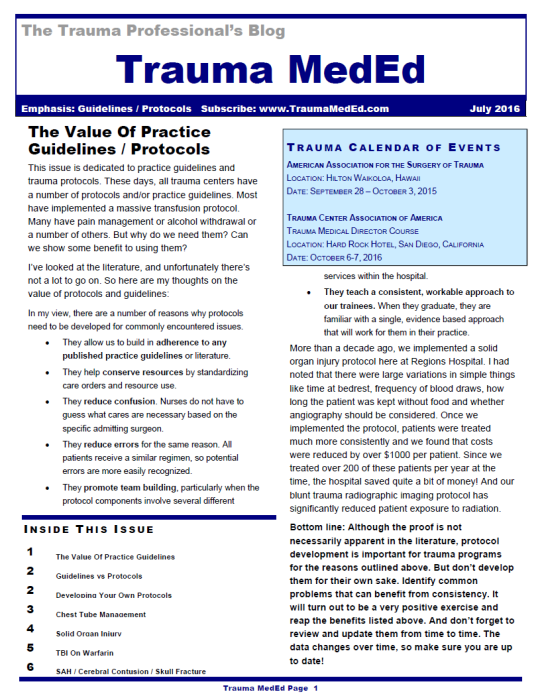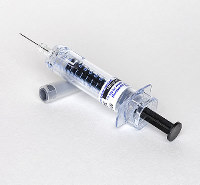Hospitals are increasingly relying on a hospitalist model to deliver care to inpatients on medical services. These medical generalists are usually trained in general internal medicine, family medicine, or pediatrics and provide general hospital-based care. Specialists, both medical and surgical, may be consulted when needed.
In most higher level trauma centers in the US (I and II), major trauma patients are admitted to a surgical service (Trauma), and other nonsurgical specialists are consulted based on the needs of the patients and the competencies of the surgeons managing the patients. As our population ages, more and more elderly patients are admitted for traumatic injury, with more and more complex medical comorbidities.
Is there a benefit to adding medical expertise to the trauma service? A few studies have now looked at this, and I will review them over the next few days. The Level I trauma center at Christiana Care in Wilmington, Delaware embedded a trauma hospitalist (THOSP) in the trauma service. They participated in the care of trauma patients with coronary artery disease, CHF, arrhythmias, chronic diseases of the lung or kidneys, stroke, diabetes, or those taking anticoagulants.
The THOSP was consulted on appropriate patients upon admission, or during admission if one of the conditions was discovered later. They attended morning and afternoon sign-outs, and weekly multidisciplinary rounds. A total of 566 patients with hospitalist involvement were matched to controls, and ultimately 469 patients were studied.
Here are the factoids:
- Addition of the THOSP resulted in a 1 day increase in hospital length of stay
- Trauma readmissions decreased significantly from 2.4% to 0.6%
- The number of upgrades to ICU status doubled, but ICU LOS remained the same
- Mortality decreased significantly from 2.9% to 0.4%
- The incidence of renal failure decreased significantly
- Non-significant decreases in cardiovascular events, DVT/PE and sepsis were also noted
- There was no difference in the number of medical specialty consults placed (cardiology, endocrinology, neurology, nephrology)
Bottom line: This paper shows some positive impact, along with some puzzling mixed results. The decrease in mortality and many complications is very positive. Was the increase in ICU transfers due to a different care philosophy in medical vs surgical personnel? And the failure to decrease the number of specialty consults was very disappointing to me. I would expect that having additional medical expertise on the team should make a difference there.
Was the THOSP really “embedded” if they were not involved in the regular daily rounds? In this case, they were present only for handoffs and for weekly multidisciplinary rounds. I believe that having them on the rounding team daily would be of huge benefit, allowing the surgeons and hospitalists to learn from each other. Plus, there should be a benefit to the residents in a Level I center, helping them broaden their ability to care for these complicated patients.
Tomorrow: The G-60 Geriatric Trauma Service
Reference: Embedding a trauma hospitalist in the trauma service reduces mortality and 30-day trauma-related readmissions. J Trauma 81(1):178-183, 2016.


